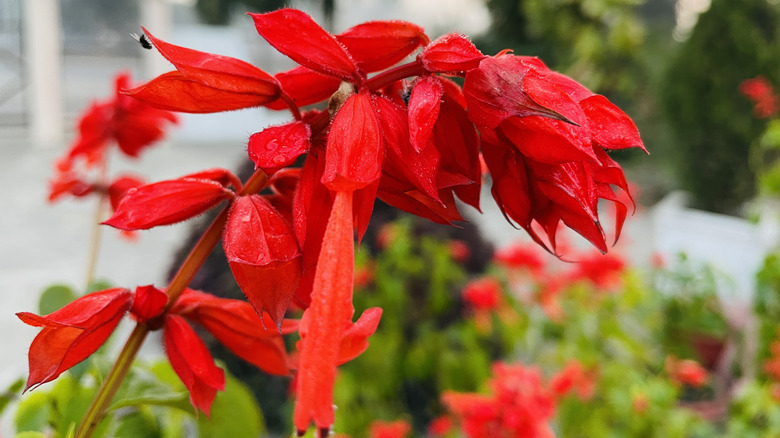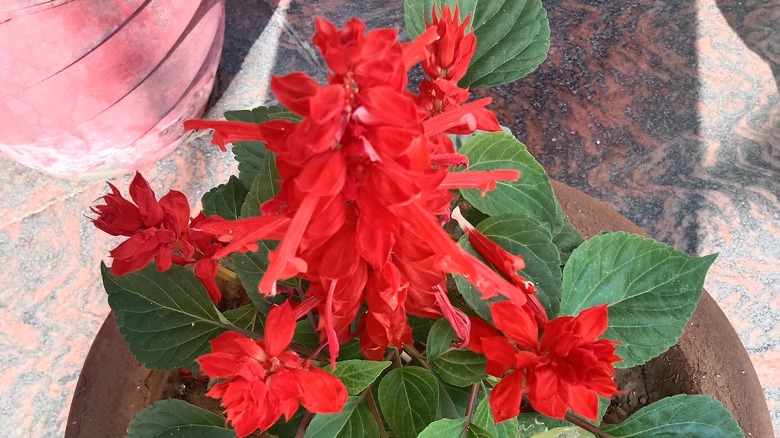Entice Hummingbirds To Your Garden With A Gorgeous Red Flower They Can't Resist
Let's be real here –- if there were a beauty contest for garden visitors, hummingbirds would win by a landslide! Not only are these dazzling little pollinators a joy to watch, but they also indicate that we're doing our part in supporting the ecosystem. After all, if hummingbirds are there, that must mean we are doing something good, right?
So, how do we lure these feathered jewels into our backyards and keep them coming back for more? Sure, the perfect hummingbird feeder and a crystal-clean water station are a must, but let's talk about the true star of the show: the scarlet sage, also known as Salvia coccinea. This plant practically rolls out the red carpet for our flapping friends, plus it's stunningly gorgeous, making it a pretty easy winner.
Originating from sunny Mexico, this salvia species has set up shop in the Southeastern U.S. without any invasive tendencies, meaning you won't have to worry about it taking over your yard when all you want to do is enjoy looking at some pretty birds. Plus, with vibrant red flowers that bloom from early summer until frost, this salvia offers a practically never-ending buffet for our nectar-loving companions — hummingbirds find it incredibly easy to dive into the tubular flowers, which are pretty much perfectly shaped for their long, thin beaks. Won over yet? If so, let's move on to how you can grow this flower in your own yard!
How do you grow scarlet sage?
Scarlet sage is a great addition to nearly any garden, especially if you are looking for that pop of red color that will bring all the hummingbirds to your yard (this plant is the only US native sage with red flowers). Hardy in zones 9 and 10, scarlet sage will reseed easily enough in zones 6 through 8 as well, and can even be grown as an annual in cooler climates.
To start growing scarlet sage, plant these beauties in full sun to partial shade, ideally in sandy, fertile soil. Clay won't kill scarlet sage, but you'll want to make sure the soil drains well. You'll also want to plant them a good distance apart as they can grow from 2 to 4 feet high and spread out 1 to 2 ½ feet wide. This plant will tolerate drought when fully grown but will flower more easily if watered well during dry spells. Here's another little gardening tip: let the brown stalks linger on after the first freeze. They may not be the prettiest sight, but they'll help keep your plants warmer during the winter, and you can just prune them off in spring.
Perfect spots for scarlet sage include walkways and coastal areas, and they thrive in a cottage or pollinator garden — because who doesn't want to host the neighborhood's hummingbirds? For a show-stopping container display, try pairing scarlet sage with its friends, cupheas and petunias, for a DIY pollinator pot.

